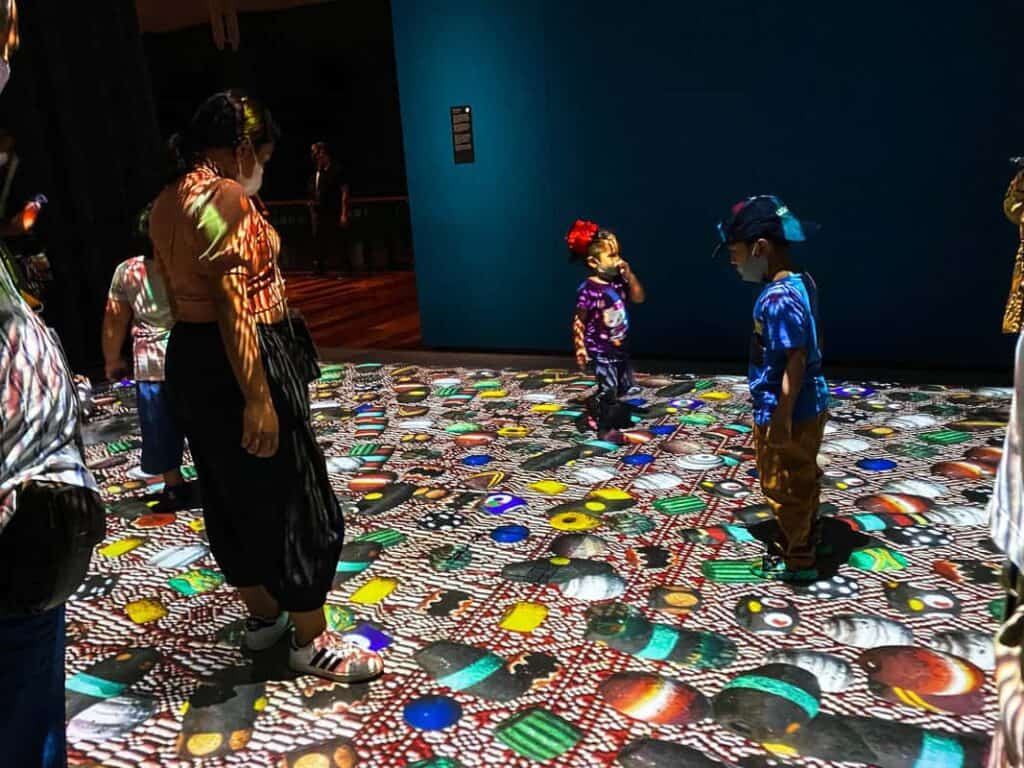Welcome Borneo's Heritage: Visit Cultures Museum
Welcome Borneo's Heritage: Visit Cultures Museum
Blog Article
Delve Into the Fascinating Globe of Borneo's Cultural Heritage: A Comprehensive Overview to the Cultures Museum Experience
Submersing oneself in the complex tapestry of Borneo's cultural heritage is comparable to embarking on a trip with time and tradition. The blend of native people, standard handicrafts, exciting performances, and historic narratives housed within the boundaries of the island's museums supplies a look into a globe teeming with vivid custom-mades and profound traditions. As site visitors traverse with these databases of culture, they are bid to explore a world where past and existing intermingle, inviting reflection on the resilience and richness of Borneo's varied heritage.
Indigenous People of Borneo
Borneo is home to over 50 indigenous tribes, each with special social techniques and practices that have been preserved for generations. Amongst these people are the Iban, known for their standard longhouses and detailed tattoos where numerous family members stay.
These aboriginal people play a vital role in maintaining Borneo's abundant social tapestry. Regardless of exterior impacts and innovation, several people proceed to promote their personalizeds, languages, and ideas. Site visitors to Borneo have the chance to immerse themselves in the unique lifestyles of these people with cultural tours, homestays, and community-based tourist campaigns. By involving with these aboriginal neighborhoods, visitors can get a much deeper recognition for the variety and resilience of Borneo's native heritage.
Conventional Handicrafts and Artifacts

One prominent instance of traditional handicrafts in Borneo is the manufacturing of woven products - Borneo Cultures Museum. Experienced weavers utilize all-natural fibers like pandan, rattan, and bamboo entrusts to produce complex baskets, floor coverings, and accessories embellished with vibrant patterns that hold symbolic significances within the area
The art of woodcarving is another considerable aspect of Borneo's traditional handicrafts. Craftsmens sculpt detailed styles into numerous kinds of wood to produce masks, sculptures, and music tools that not just offer functional functions yet likewise hold social value, usually depicting mythology or spiritual ideas.
In Addition, Borneo is renowned for its beadwork, with artisans thoroughly crafting beads from products like glass, seeds, and shells to create fashion jewelry, apparel embellishments, and decorative things that showcase the area's dynamic aesthetic practices. These conventional handicrafts and artefacts not just function as concrete expressions of Borneo's cultural heritage however additionally supply insights into the areas' ideas, worths, and means of life.

Social Performances and Festivals
With a deep-rooted link to their social customs, the communities in Borneo come to life via lively social efficiencies and events that celebrate their heritage. These events showcase the rich diversity of Borneo's ethnic groups, each offering one-of-a-kind dances, music, and rituals that have actually been passed down via generations. One of one of the most popular festivals is the Gawai Dayak, celebrated by the Dayak individuals to note the rice harvesting period. Throughout this festival, traditional songs fills the air, elaborate dancings are done, and sophisticated standard outfits are put on. One more considerable occasion is the Pesta Kaamatan, commemorated by the Kadazandusun area to provide many thanks for the rice harvest. This celebration includes cultural efficiencies, including the Sumazau dancing, and typical sports like the bamboo dance. Site visitors Borneo Cultures Museum to Borneo can immerse themselves in these celebrations, obtaining a deeper understanding of the region's cultural heritage and experiencing the warm hospitality of its people. Social performances and events act as a dynamic tip of Borneo's rich cultural tapestry and the value of protecting these customs for future generations.
Historic Narratives and Artifacts
Checking out the historic stories and artifacts of Borneo supplies a fascinating peek into the area's abundant past and cultural evolution. Borneo's historical tapestry is woven with diverse influences, mirroring the communications between indigenous people, Chinese traders, European colonizers, and Malay sultanates. The artefacts located in Borneo showcase this intricate background, ranging from typical crafts like complex beadwork and woodcarvings to archaeological treasures such as ancient ceramic and devices.
Among the most compelling elements of Borneo's historical narratives is the conservation of dental traditions gave via generations. These tales give understandings into the beliefs, custom-mades, and day-to-days live of Borneo's citizens throughout the centuries. The artifacts discovered from archaeological sites provide substantial connections to these stories, allowing site visitors to witness the material culture of previous societies firsthand.
Contemporary Cultural Conservation Initiatives

Additionally, curricula and cultural exchange tasks play a critical duty in increasing awareness concerning the value of protecting Borneo's special cultural heritage. By engaging colleges, museums, and the wider neighborhood in discussions and tasks that celebrate Borneo's diverse societies, conservation initiatives can acquire energy and assistance for long-term sustainability. Cooperations between governmental bodies, charitable organizations, and local neighborhoods are vital in driving these conservation ventures forward, making sure that Borneo's rich social heritage remains vivid and cherished for generations ahead.
Conclusion
To conclude, the cultural heritage of Borneo is varied and abundant, with indigenous people, conventional inventions, social performances, events, historical stories, and modern conservation initiatives all adding to its originality and relevance. Visitors to Borneo's cultural galleries can gain a deeper understanding and admiration of the region's cultural heritage, enabling a more immersive and enlightening experience.
Submersing oneself in the detailed tapestry of Borneo's cultural heritage is similar to getting started on a trip through time and custom.With an ingrained link to their cultural customs, the neighborhoods in Borneo come active through dynamic social efficiencies and events that celebrate their heritage. Cultural performances and celebrations offer as a vivid reminder of Borneo's rich cultural tapestry and the value of maintaining these practices for future generations.
Moreover, educational programs and cultural exchange activities play a vital duty in raising awareness about the importance of preserving Borneo's one-of-a-kind social heritage. Cooperations in between governmental bodies, charitable companies, and neighborhood communities are crucial in driving these preservation undertakings ahead, making sure that Borneo's rich cultural heritage remains lively and treasured for generations to come.
Report this page